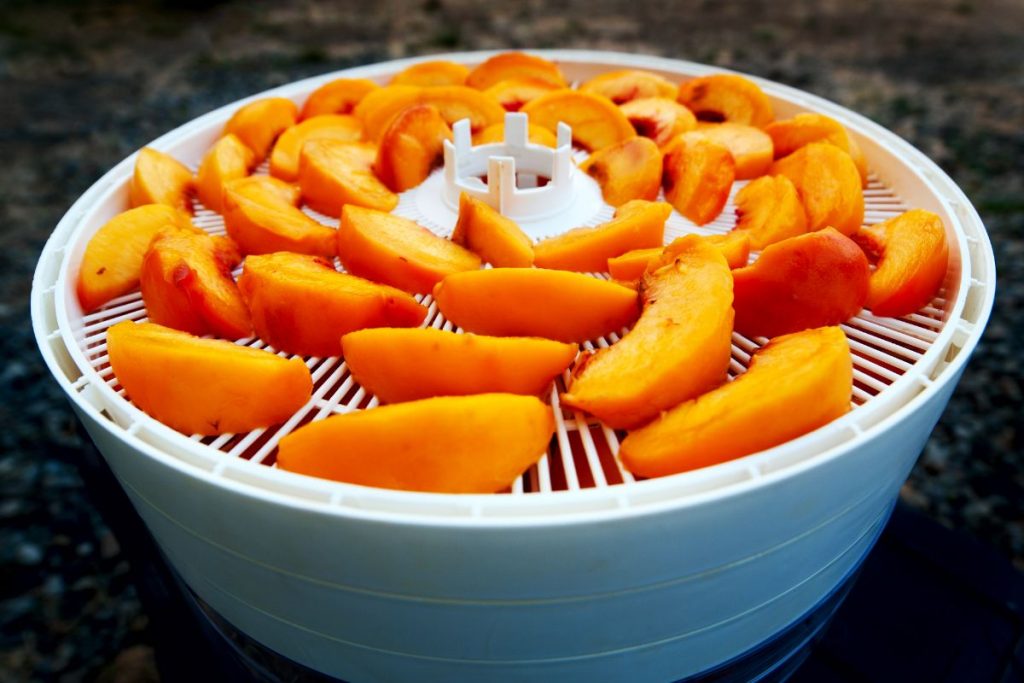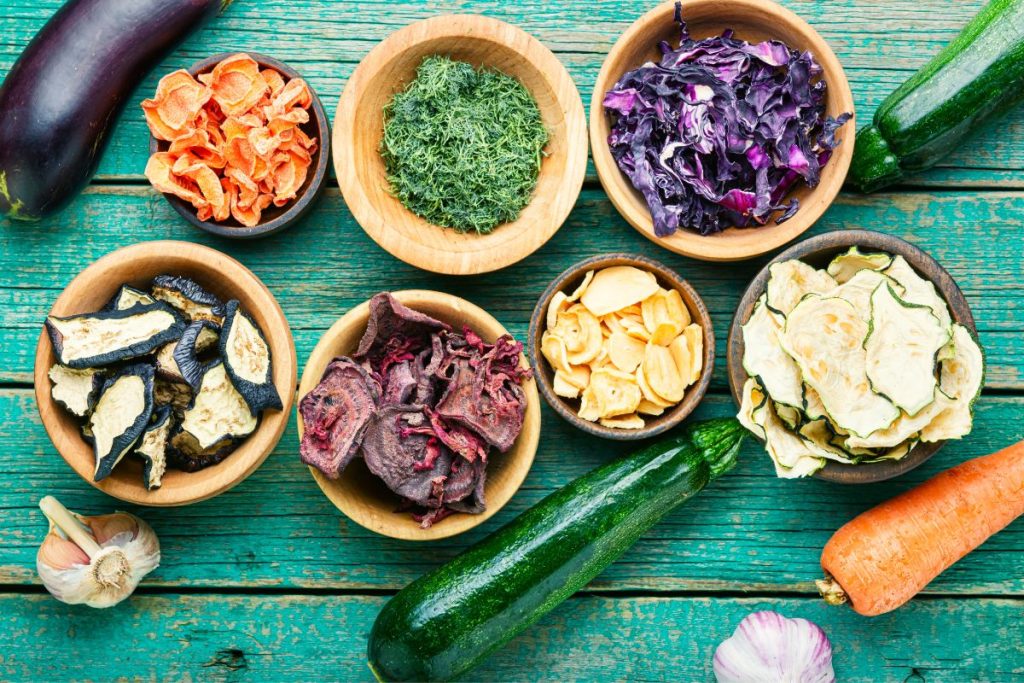To dehydrate food in a dehydrator, arrange thinly sliced pieces of food on the dehydrator trays. Set the temperature of the dehydrator and allow the machine to run for the recommended drying time. Ensure the food dries completely and cools to room temperature before storing in airtight containers.
Table of Contents
How to Dehydrate Food Using a Food Dehydrator
Using an electric dehydrator is one of the best ways for beginners to learn to dry food quickly and efficiently.
- Prepare the food you wish to dehydrate. Keep in mind that fruit, veggies, and meat require a different preparation process.
- Slice fruits, vegetables, and meat into thin pieces no larger than 1/4” thick to promote even drying.
- Arrange the pieces on dehydrator trays in single layers ensuring they don’t overlap.
- Set the dehydrator temperature and monitor the drying time. This will vary depending on the type of food you are drying and its moisture content.
- Rotate the trays or flip the food pieces occasionally during the drying process to ensure even drying.
- After the recommended drying time, take a few pieces out and allow them to cool to room temperature. Test these pieces for dryness.
- If the food is fully dry, remove the remaining food from the dehydrator and set it on cooling racks. Let them sit at room temperature for 30-60 minutes.
- Condition the dried food in airtight containers such as glass jars for 1-2 weeks while shaking the container at least once daily to ensure no condensation forms.
- Store the food in airtight containers such as freezer bags, Mylar bags, or Mason jars.

How Do You Prepare Food for Dehydrating?
Different types of foods require different preparation techniques before the dehydration process.
How to Prepare Vegetables for Dehydrating
- Sort your vegetables. Remove and discard blemished or wilted veggies.
- Rinse the vegetables under cold water for a few minutes.
- Use paper towels to blot the vegetables, removing excess water.
- Remove tough, fibrous skins, stems, and inedible pieces.
- Slice or dice vegetables into smaller pieces to ensure even drying.
- Steam blanch your vegetables for 3-5 minutes, then submerge briefly in an ice bath. This slows enzyme activity and helps to preserve the nutritional value during the dehydrating process.
- Ensure any surface moisture is gone before dehydrating your vegetables by blotting with paper towels.
How to Prepare Fruits for Dehydration
- Choose fresh, ripe fruit. Remove any bruised, discolored, or overly ripe fruit, as these will not dehydrate well.
- Wash fruits under cool running water. Use a soft brush to remove dirt and debris if necessary.
- Pat the fruits dry with paper towels to remove excess water.
- Peel, de-stem, and remove inedible cores from the fruit as required. For example, you can peel apples or leave their skins intact but must remove their seeds and core.
- Use a sharp knife or mandolin to cut the fruits into halves, quarters, or 1/8-inch thick pieces. Smaller fruit and berries like cherries and blueberries can be dried whole.
- Pretreat fruits by soaking them for 10 minutes in a solution made from water with a few tablespoons of either lemon juice, citric acid, or ascorbic acid.
- Rinse the fruits after soaking them in a citric acid solution.
- Pat all the fruits dry with paper towels to remove excess water.
How to Prepare Meat for Dehydration
- Choose cuts of lean meat for dehydration. If your meat pieces have excess fat or connective tissue, remove them.
- Slice meat into thin pieces that are approximately the same size. Ensure the slices are no more than 1/4” thick.
- Pre-cook the meat by steaming, roasting, or boiling it to an internal temperature of 160°F-165°F. This is done for food safety as many dehydrators will not reach high enough temperatures to kill all the bacteria in raw meat.
What Foods are Good to Dehydrate?
Here are some of the most popular types of food you can dehydrate:
- Cooked food, including pasta, soups, and stews
- Fish such as cod, halibut, and sea bass
- Fruit including apricots, berries, peppers, apples, and tomatoes
- Fruit leather made from a puree of fruit
- Lean meat such as beef jerky, ground beef, chicken, and pork
- Grains, granola, seeds, and nuts
- Herbs such as mint, oregano, rosemary, and lavender
- Jams, syrups, and sauces
- Legumes, including beans, peas, and lentils
- Vegetables including beets, potatoes, green beans, scallions, kale, and zucchini

How Long Does it Take to Dehydrate Food in a Dehydrator?
The amount of time it takes depends on the type of food, how it is prepared, and the specifications of the food dehydrator.
| Type of Food | Dehydrating Time |
| Fruit | 6 – 36 hours |
| Herbs | 2 – 4 hours |
| Meat | 6 – 12 hours |
| Veggies | 4 – 12 hours |
What is the Best Temperature to Dehydrate Food?
The recommended temperatures for dehydrating different foods in a dehydrator are:
| Type of Food | Temperature Range |
| Fish & Pre-Cooked Meat | 145°F -160°F |
| Fruits | 135°F -145°F |
| Grains | 145°F |
| Lentils & Beans | 125°F |
| Poultry & Pork | 165°F |
| Vegetables | 125°F – 145°F |
How Do You Know When Dehydrated Food is Done?
You’ll know dehydrated food is done if it doesn’t produce moisture when you squeeze it after allowing it to cool to room temperature.
When testing for dryness, dehydrated fruits should be pliable and leathery, while dehydrated vegetables should be hard and brittle.
Fully dehydrated food shouldn’t stick together or to the insides of the food storage container. It also shouldn’t cause condensation to form in the container.

